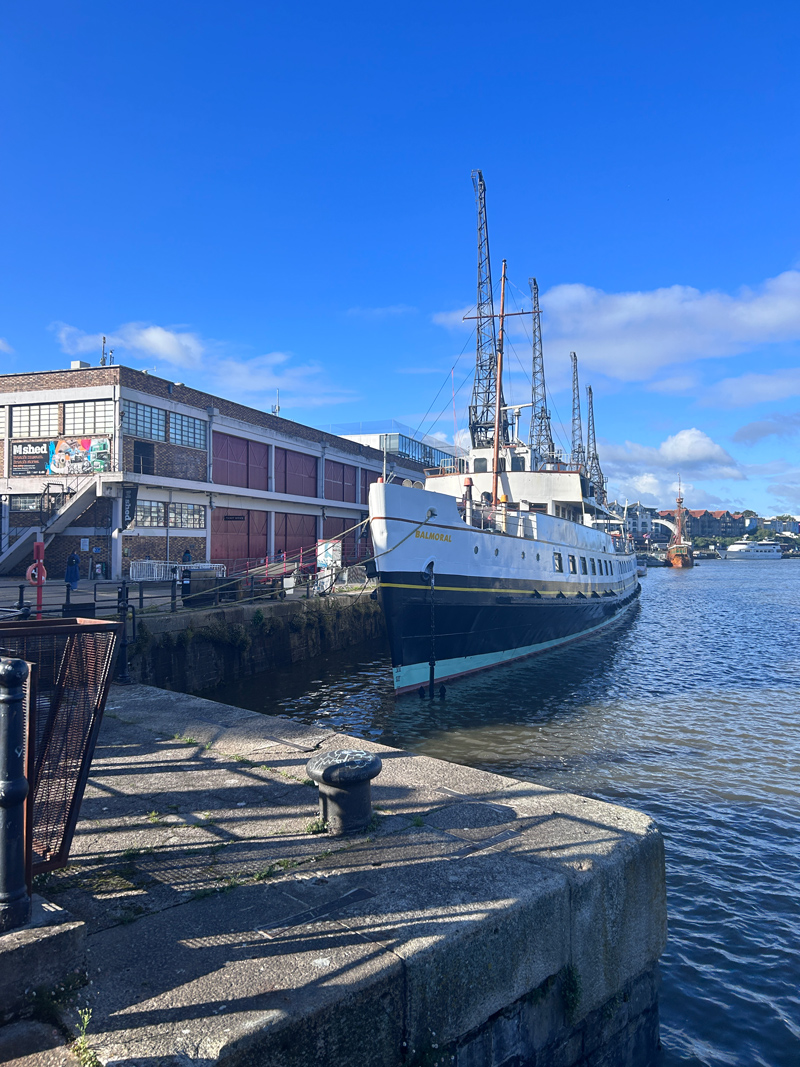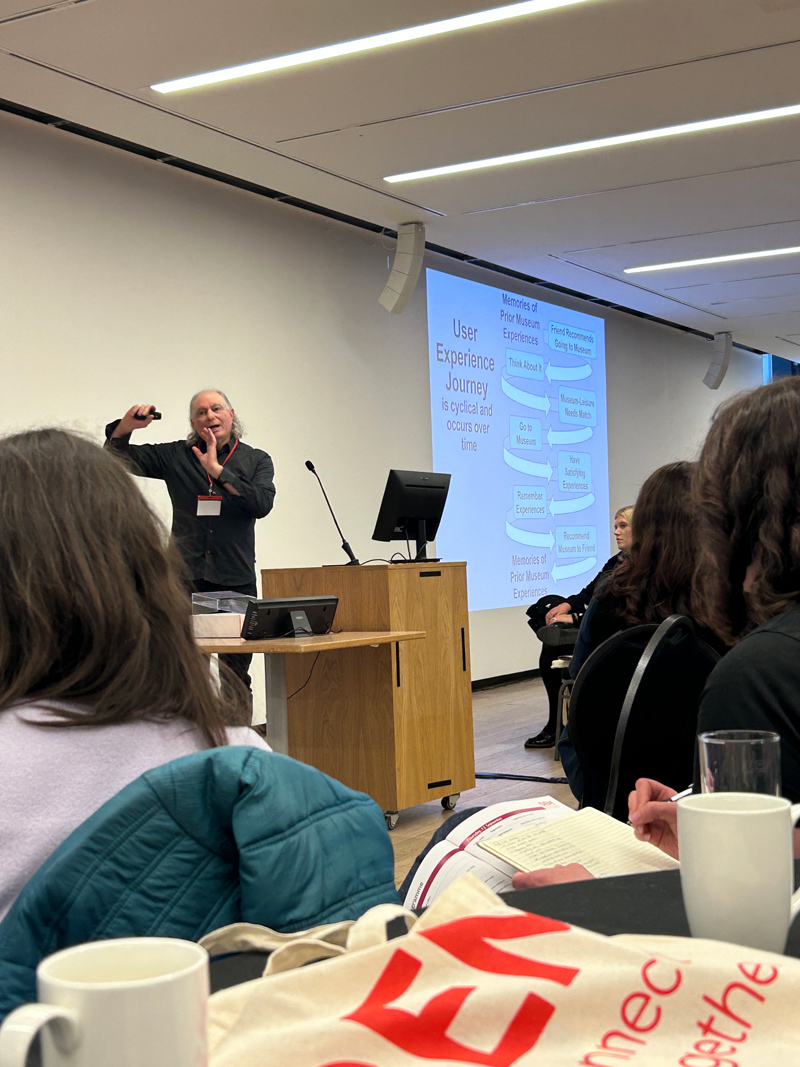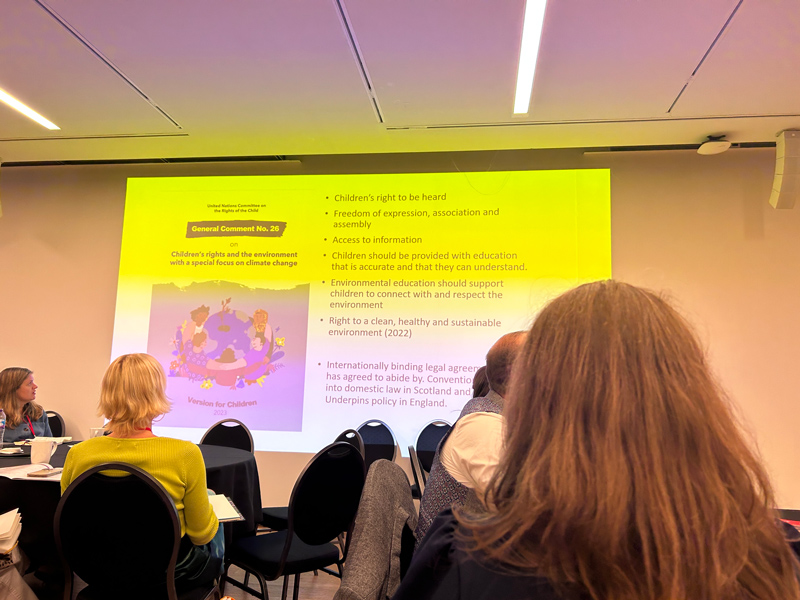An insightful and inspiring day at the Group for Education in Museums (GEM) Conference in Bristol! The M-shed is a wonderful location, and the beautiful walk towards the museum was a great start to the day.

We thought this post was a good opportunity to decompress and reflect on the key takeaways.
Keynote – John Falk
The keynote speaker was John Falk, a renowned figure in museum learning. His speech, while reinforcing the excellent work in our field, brought to light some crucial points about well-being and the value of learning. These insights have big applications to heritage interpretation, particularly those in our design practice. These were the key takeaways from his talk:
- Museum value is ONLY defined by the user/community. The institution does not define value. We must calibrate value by understanding what communities and users want and need.
- Define what “success looks like from the user’s perspective.
- Museum experiences, as John Falk highlighted, are not just memorable but also have a profound impact on our well-being. They create lasting memories because they influence our well-being.
- John Falk focussed strongly on a broader concept of well-being, stating that it is a survival phenomenon. It is not an end goal; it is ephemeral and dynamic. We are continually working to develop our well-being.
- He breaks well-being down into four categories:
-
- Personal well-being
- Intellectual well-being
- Social well-being
- Physical well-being
Museum experiences have been found to enhance ALL of these categories; we love this!

John spoke of 10 realistic principles of incremental ways of creating value:
- Connect experiences to user’s lives
- Allow users to make the experiences their own
- Maximise opportunities for agency and control
- Surprise and delight – this helps with memorability
- Make the user feel safe and secure
- Promote social interaction
- Make the experience personally challenging – see the flow theory.
- Give a reason to do it again. Open-ended and repeatable
- Connect users to other experiences in their lives to do it again
- Encourage sharing and comparing, extending the experience over time.
These principles are relevant to so many areas of our work – publications and learning resources in particular.
Further takeaways from day 1
Sara Wajid delivered a rousing speech with some powerful statements, including one really poignant message which seems to be running through the conference so far: Museums are still ‘super-serving’ a very narrow audience. This is a limitation of the museum service as a whole: only certain groups of people are coming. Furthermore, there was also the recognition that museums have long perpetuated narratives of white supremacy – This is still a big barrier to engagement for some community groups. The sector, especially the learning teams, are now acknowledging this and making a step change.
Finally, Henry McGhie’s talk about museum education and participation for better futures reinforced our movement for sustainable thinking in our projects. It reminded us to continually reflect on our practice. In light of this, we will look to better reference, recognise, and respond to the SDGs and Comment 26 in our work and policies.

